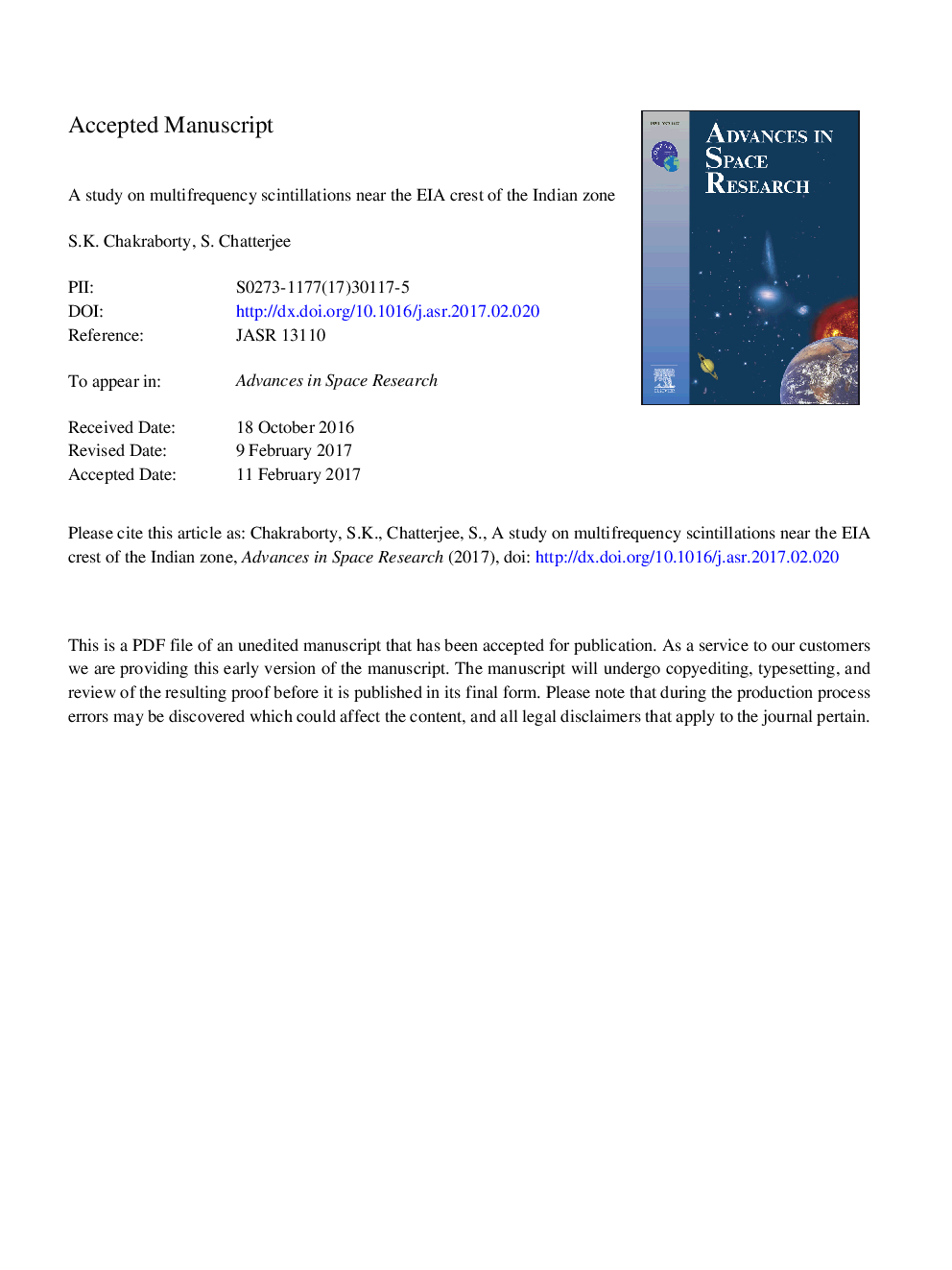| Article ID | Journal | Published Year | Pages | File Type |
|---|---|---|---|---|
| 5486391 | Advances in Space Research | 2017 | 45 Pages |
Abstract
Occurrence features of ionospheric scintillations at S band (2492.028 MHz) are reported for the first time. The same have been explored in the context of scintillations at VHF (250.650 MHz) and L5 (1176.45 MHz) bands. Observations were carried out during the period April-December, 2015 at Raja Peary Mohan College Centre (RPMC: 22.66° N, 88.4° E), located near the equatorial ionization anomaly (EIA) crest of the Indian longitude zone. Mostly weak (<10 dB), short duration, slow fading rate with shallower slope power spectra characterize the S band scintillations compared to VHF and L5 band. In the severe scintillation conditions of VHF frequent loss of lock in L5 channel is reflected. Fade depth of 4.2 ± 1.3 dB and fade rate â¼9 fades/minute at S band mostly precede the loss of lock at L5 channel. A good correspondence between fade rates at multi frequency band is reflected irrespective of phases of scintillation. Spectral analysis reveals weak scattering is the dominating mechanism for scintillation at S band while VHF and L5 band scintillations are mostly attributed to multiple scattering. The estimated threshold coherence length of <23 m at VHF may be suggested to be a good indicator for occurrence of L5 and S band scintillations. Occurrence of simultaneous multi-satellite multi-frequency scintillations leads to speculation over the failsafe navigation using available IRNSS constellation. The results are discussed in terms of existing theory of evolution, structure and dynamics of electron density irregularities in the low latitude region.
Keywords
Related Topics
Physical Sciences and Engineering
Earth and Planetary Sciences
Space and Planetary Science
Authors
S.K. Chakraborty, S. Chatterjee, Debasis Jana,
